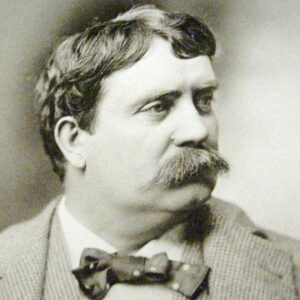Daniel Hudson Burnham was a well-known American architect who constructed and planned many of the country’s most prominent buildings and communities. He was born into a devout household in New York City and raised in Chicago. He had a difficult time getting into a university after finishing high school, so he became an apprentice at the architectural firm of William Le Baron Jenny, who was known as the “Father of Skyscrapers” at the time. Burnham moved his architect company over time, and it was there that he met his future colleague John Wellborn Root. Both Root and Burnham established their own architectural practice and were regarded as experts in their fields. Root was more grounded and practical in his approach than Burnham, who was a creative visionary. However, with Root’s untimely death, Burnham established D.H. Burnham & Company and embarked on his most ambitious project to date, the ‘World’s Columbian Exposition’ in Chicago. He built a ‘White City’ there, which is today regarded as a masterpiece. Harvard and Yale institutions honored him with honorary degrees for his contributions.
Childhood and Adolescence
Daniel Burnham was born in Henderson, New York City, on September 4, 1846. When he was a child, his family relocated to Chicago, Illinois. He was raised in a religious household.
He attended a public school in Chicago but was unable to gain admission to a university, having frequently failed Harvard and Yale admissions tests. As a result, he decided to pursue politics as a career.
He did an apprenticeship as a draftsman at William Le Baron Jenny’s architecture firm when his ‘politics’ stint did not work out.
Career of Daniel Burnham
Burnham began working as a draftsman at Carter, Drake, and Wight in 1872, and within a year, he formed a partnership with a coworker, John Wellborn Root. The arrangement turned out to be a prosperous one.
Burnham and Root were complementary in that Burnham was a visionary and designer, while Root was a superb draftsman and physics genius. John Sherman gave them their first assignment, which was to build his Prairie Avenue home.
Between 1873 and 1881, after the Great Chicago Fire, Root and Burnham embarked on the monumental task of rebuilding the entire city from the ground up, designing over 165 private dwellings and 75 public and private buildings.
Root & Burnham’s buildings all have a European feel to them. The firm eventually adapted to new-age techniques and built structures such as ‘The Rookery,’ the ‘Reliance Building,’ the ‘Monadnock,’ and others.
Burnham took over as chief of construction and chief of consultant architect for the World’s Columbian Exposition in Chicago after Root’s death in 1893. It was his most well-known piece of work.
For the Columbian Exposition, Burnham collaborated with a number of architecture firms from around the eastern United States to build the ‘White City.’ Buildings, landscapes, boulevards, gardens, and classical architecture can all be found there.
He received honorary degrees from Harvard and Yale at the same time for his brilliant work for the World’s Columbian Exposition in Chicago. He was also elected as the American Institute of Architects’ president.
Burnham was appointed by the United States Philippine Commission to develop the towns of Baguio and Manila in the early 1900s. Around the same period, he designed the Flatiron Building in New York and planned the Beaux-Arts Union Station in Washington.
Burnham envisioned Chicago as a magnificent city in 1909. Following the huge success of the ‘White City,’ he ignored all the practical aspects of city design and concentrated solely on the visual aspects. It cost around $300 million dollars to build.
According to his concept, the city will have a lakefront and river, and every person will be able to walk to a park. Within the city, an island was finally constructed, providing both nature conservation and magnificent sight.
Burnham’s firm became the world’s largest architecture firm in 1912, and a model for many other up-and-coming architecture firms in the United States. President Taft appointed him as Chairman of the Committee on the Fine Arts.
Personal History and Legacy
In 1876, Burnham married Margaret Sherman. She was the affluent stockyard executive’s daughter. They had three sons and two daughters throughout their lengthy marriage.
Burnham died in Heidelberg, Germany, in 1912. His two sons, Hubert and Daniel Jr., survived him. His sons took over the business and renamed it ‘Burnham Brothers,’ donating the majority of his drawings.
Burnham’s original drawings and records, which were bequeathed to the Art Institute of Chicago by his sons after his death, eventually became the Burnham Library, which has one of the world’s largest collections of architectural information.
Burnham Park, Daniel Burnham Court in Chicago, Burnham Park in Baguio City, Daniel Burnham Court in San Francisco, and other memorials to Burnham have been built around the United States.
Burnham’s partner Root died of pneumonia at a young age in 1891.
Burnham’s style and work were deemed “feudal” and “imperial” by Louis Sullivan, the best architect of the Chicago School. He believed it was reversing the progress of modern architecture by 50 years.
He had sent his sons to the Ecole des Beaux-Arts in Paris to master traditional architectural skills, as he had been influenced by the architecture and aesthetics of Rome and Greece.
Estimated net worth
The estimated net worth of Daniel Burnham is unknown.


